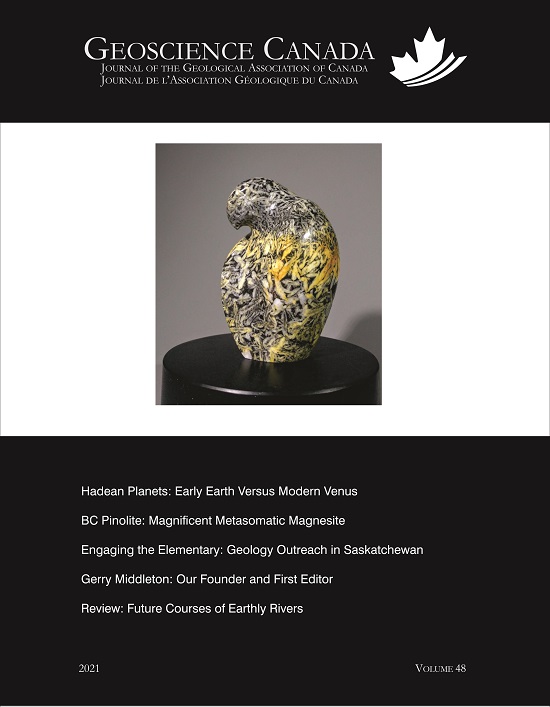Earth Science Education #6. Lessons Learned: Organizing a Geoscience Outreach Program at the University of Saskatchewan
Published 2021-12-08
Keywords
- Geoscience outreach,
- Hands-on activities,
- Informal education,
- University,
- Volunteerism
How to Cite
Funding data
-
Canadian Geological Foundation
Grant numbers 19-36
Abstract
Geology Outreach at the University of Saskatchewan was initiated during the 2018/19 academic year as a free and informal education opportunity for K–12 educators and their students in Saskatchewan. The program was 100% volunteer-run by undergraduate and graduate students in the Department of Geological Sciences at the University of Saskatchewan. We estimate reaching more than 1000 students in Saskatoon and surrounding areas following two years of outreach offerings. Hands-on activities offered included ‘Rocks and Minerals’, ‘Fossils’, ‘Meteorite Impacts’ and ‘Volcanoes’ and also involved a tour of the Museum of Natural Sciences when completed on campus. The overall intent of these activities was to foster excitement about the Earth Sciences. Typically, Educators who booked our program taught grades 4–7, where the Earth Sciences are strongly represented in Saskatchewan’s science curriculum. Most outreach offerings occurred on the University of Saskatchewan campus, but some were offered remotely at elementary schools and various Girl Guides of Canada events. During the 2019/20 academic year, we booked every outreach event planned for that year within two days and had a waiting list of more than 30 teachers across the province. The demand for geoscience outreach in Saskatchewan is high, and we hope to continue providing engaging, relevant, and fun educational outreach opportunities. University departments across Canada should allocate funds for community and school outreach initiatives and hire science communicators to oversee programs such as this.
References
- Canadian Geological Foundation, 2021, About [website]. Retrieved from http://www.canadiangeologicalfoundation.org/?page_id=2. [Last accessed: 7/9/2021].
- Government of Saskatchewan, 2021, Saskatchewan Curriculum [website]: Government of Saskatchewan Ministry of Education. Retrieved from https://www.edonline.sk.ca/webapps/moe-curriculum-BB5f208b6da4613/. [Last accessed: 8/9/2021].
- Metcalfe, J., 2019, Comparing science communication theory with practice: An assessment and critique using Australian data: Public Understanding of Science, v. 28, p. 382–400, https://doi.org/10.1177/0963662518821022.
- Reincke, C.M., Bredenoord, A.L., and van Mil, M.H.W., 2020, From deficit to dialogue in science communication: EMBO (European Molecular Biology Organization) Reports, v. 21, e51278, https://doi.org/10.15252/embr.202051278.
- TakingITGlobal, 2021, #RisingYouth: community service grants [website]: TakingITGlobal. Retrieved from: https://www.risingyouth.ca/. [Last accessed: 7/9/2021].
- Labs, 2021, The cognitive load theory and your presentations [blog]: 356 Labs Agency, Sofia, Bulgaria. Retrieved from: https://356labs.com/blog/cognitive-load-theory-presentations/. [Last accessed: 11/22/2021].
- University of Wyoming Geological Museum, 2021, WyoFossil Augmented Reality App [website]: University of Wyoming, Laramie, WY. Retrieved from: http://www.uwyo.edu/geomuseum/wyofossil/. [Last accessed: 7/9/2021].
